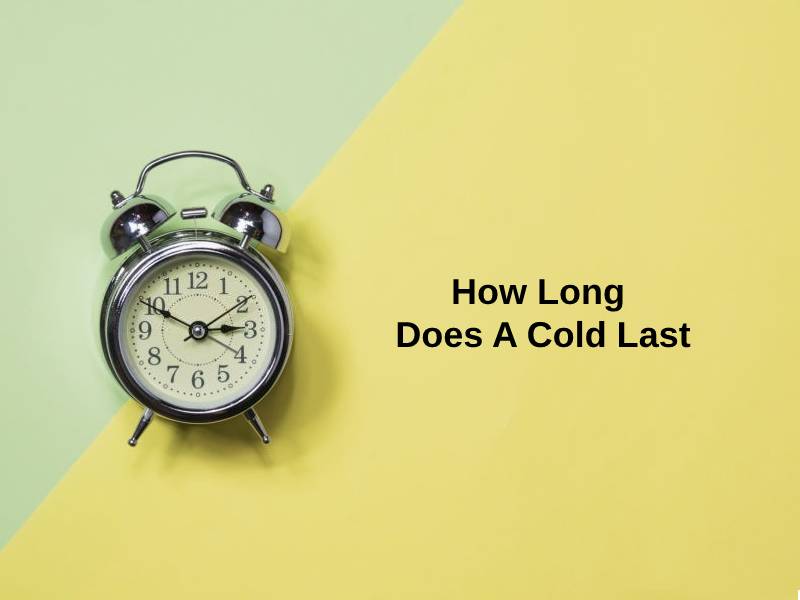Exact Answer: 7 to 8 days
Cold is a common viral infection of the nose and throat. The common cold is a viral infection that affects our upper respiratory tract. A common cold could happen due to many different types of viruses.
According to research, there are more than 200 types of different viruses which can cause the common cold. Generally, exposure to cold weather or change in weather can cause people to catch a cold.
Cold can catch anybody anytime throughout the year but is most common during the winter or rainy seasons. Commonly, adults have an average of two to three colds per year whereas children could have a cold more than twice or thrice in a year.

How Long Does A Cold Last?
The common cold is a normal problem faced by people which lasts for about seven to eight days or even two or three days more depending on person to person. But it is normal if it goes within 7 to 8 days.
A person having a cold can pass on the virus to others unknowingly as symptoms of the cold do not show up immediately it takes nearly two or three days and this period is known as the incubation period for the common cold. The virus enters the body and starts replicating. It takes about two days that they trigger the body’s reaction to fight off the virus.
The common cold symptoms may last longer in children. Most probably it is nearly seven to ten days in children. Children are more likely to catch a cold as their immune system is also not that stronger to fight against many viruses. Children also don’t take care of their hygiene much, like sneezing in the elbow or playing in dirty places.

| How long does cold last in | Duration |
| Adults | Up to 8 days |
| Children | Up to 10 days |
Why Does A Cold Last So Long?
The common cold affects our upper respiratory tract which includes the nose and throat. A common cold includes three different phases, each phase with different symptoms.
The first is the early symptoms which show up 10 to 12 hours after the person is infected. Early symptoms include scratchy throat feeling fatigued and experiencing less energy than normal.
The second is the peak symptoms which show up after 2 to 3 days. Peak symptoms include runny nose, sneezing, headache, cough, and watery eyes along with scratchy throat and fatigue.
The third is the late symptoms which include nasal discharge turns yellow in color which indicates that the body is actively fighting the infection. These symptoms show up after3 to 5 days. Some may also feel fatigued.

However, if someone has problems like asthma are much likely to suffer from the cold for a longer time. Since the immune system of children is also not so strong, therefore, they are also more likely to have a cold for a longer duration nearly a couple of weeks however after 8 to 10 days the symptoms normalizes and do not cause much irritation.
It takes three to four days for our immune system to develop antibodies against the virus and fight off germs. Sometimes people get confused between cold and flu. In general, both cold and flu are respiratory infections however, cold is milder than flu. Flu sometimes can take two or more weeks to go.
Conclusion
Cold is common until it lasts for seven to eight days but if it exceeds eight days then must visit a doctor. However, sometimes it is also not required to visit the doctor and could recover by taking proper care and rest. Sometimes, proper rest could also give relief. There is no proper for the common cold.
Food like sugar, spicy food, alcohol, caffeine, pickled food, citrous fruits, etc, should be avoided during cold or it may worsen it. Taking proper rest, hydrating properly, hot soup, ginger tea, garlic are some of the home remedies that can help you recover from the common cold. A cold is an acute disease and one should not be much worried about it.